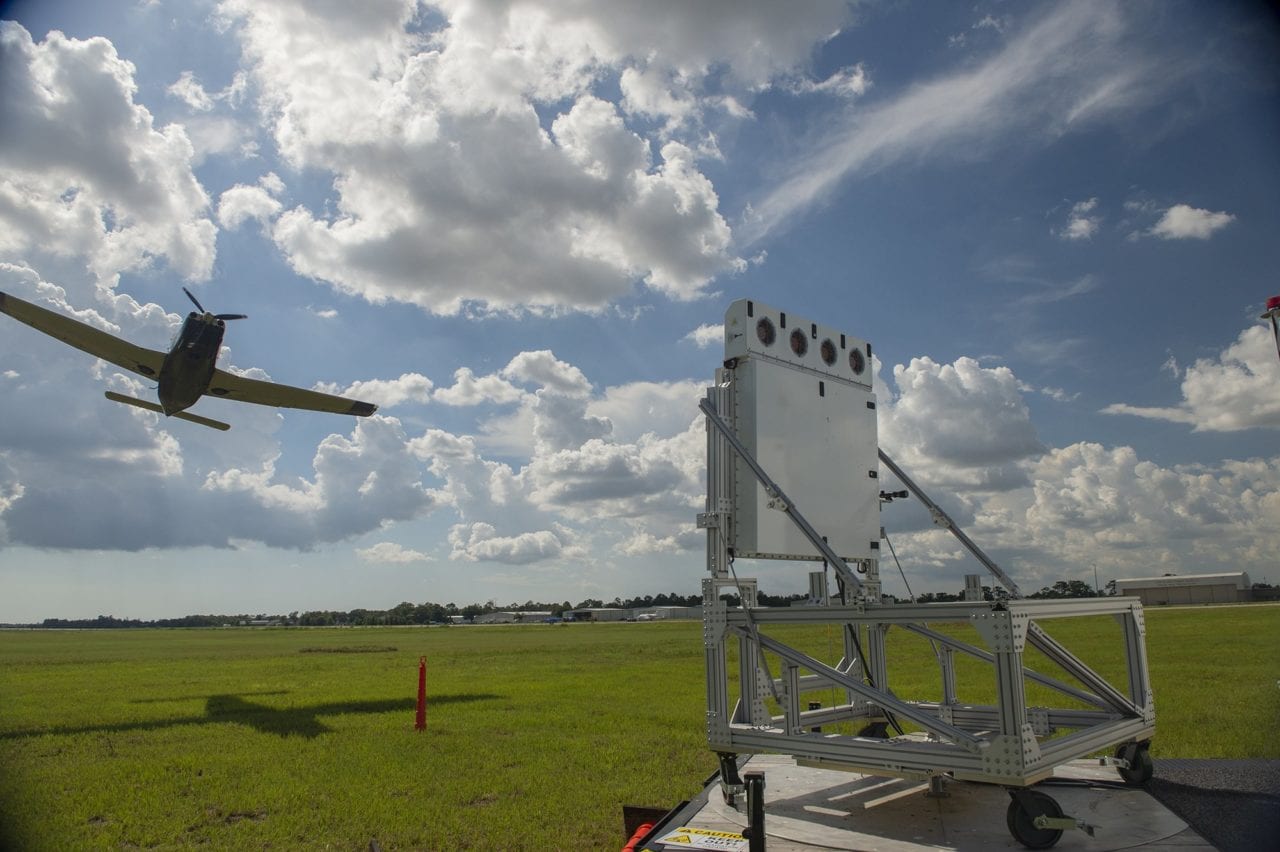
Raytheon [RTN] and Lockheed Martin [LMT] are teaming up to chase a contract to update U.S. National Airspace infrastructure with new, multipurpose radars.
In an attempt to both modernize the national airspace system (NAS) and free up L-band spectrum for the coming 5G data, a joint program office led by the FAA with the Defense Department and Homeland Security started a program called Spectrum Efficient National Surveillance Radar (SENSR).
SENSR aims to replace around 400 current radars used for air traffic control with fewer, modern systems that can be used for multiple purposes, according to Bryan Rosselli, Raytheon vice president of mission systems and sensors. The government can then sell off the currently-used spectrum of the network for use by cell providers, both allowing the network to expand and helping to fund the NAS modernization.
The actual auction phase of the program, which the FAA has estimated will bring in $14 billion-$19 billion, won’t happen until 2024, but companies are getting started early.
“Lockheed Martin and Raytheon are coming together early to help start working up front with the joint program office on how we go looking at early development of architecture and systems-of-systems approaches,” Rosselli said. They hope to get some “solid requirements” by 2020 or 2021 that will allow them to start on technology development and preproduction so that “2024 is not the start of the overall refurbishment/replacement process, but, in fact, the team has got a good running start and we’re able to really start deploying production systems and networks in regions across the U.S.”
Rosselli declined to speculate on competitors but indicated that more industry teams are likely also engaging the joint program office on the coming SENSR contract.
To that end, the Raytheon-Lockheed Martin team is interested in expanding its partnership.
“Other teams will form. We’re continuing to look for other companies,” Rosselli said. Though it’s early to identify specifics, “there are people who understand existing interfaces today,” he continued. “Clearly in the comms aspect of it. And, I would argue that the overall support-sustainment of these systems over the life-cycle is another area where we would definitely benefit from finding the right teammates and partners.”
The solution that the team provides is going to change a lot depending on what requirements the joint program office lays out, but Rosselli said three elements stick out to him as key. It should have a robust set of sensors, both for long-range and terminal-range approaches. It will require a lot of work on the networking side to tie together different parts of the network. Improving the cybersecurity of the networks also will be a focus.
Extendability is a prime objective according to Rob Smith, Lockheed Martin’s general manager and vice president of radars and sensors.
“When you go through a recapitalization like this, you have one opportunity to do it right,” he said.
While there will be certain components that are base requirements, Smith said the sensor network needs the ability to expand to air taxis, unmanned package delivery vehicles, or any number of other things that get added to the airspace in the coming years. The current sensor network struggles with low-altitude aircraft like drones and potentially air taxis.
The big contract won’t be out for years, with the joint program office currently operating off a smaller spectrum relocation fund from the White House’s Office of Management and Budget. Even firm requirements are a ways off, but Lockheed Martin and Raytheon have already been working together for a year-and-a-half before this announcement, Rosselli said.
That may sound excessive, but Smith said it makes sense when you take into account that it’s for “the largest radar production and deploy initiative in U.S. history.”
“We believe it makes a lot of sense to do the risk reduction earlier and accelerate the production schedule,” he said.